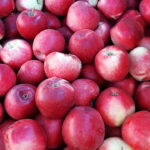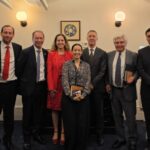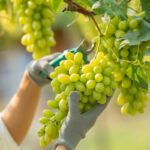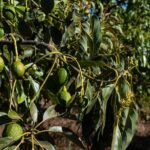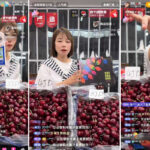Chilean kiwifruit assembly launches nine-point plan
Improved consistency, new varieties and a renewed focus on 'ready to eat' programs are just some of the Chilean Kiwifruit Committee's ideas for improving competitiveness in global markets. The proposals were released as part of a nine-point plan at the recent Third Annual Kiwifruit Committee Assembly in Curicó, with 250 participants that account for around 180 million kilograms (396 million pounds) in exports each year. 
A recent consumer perception study found Chilean kiwifruit still had problems with consistency, but the committee's plan aims to change that and several other competitive factors.
Other key points included having the whole industry united as around 80% of exports are now under the umbrella of the committee, while uniformity and quality needed improvement over the distribution window from March to October.
Committee president Oscar Villegas said this would be done through the application of quality assurance programs, while it was also important to work with receivers specialized in the fruit to improve quality when it reaches the consumer. Experts have said U.S. consumers are often not interested in peeling kiwifruit, which has spurred the committee to encourage engagement in 'ready to eat' programs with supermarket chains.
Villegas said Chile also needs to get involved in new varieties, along with incentivization of better quality 'Premium' fruit with higher dry matter standards.
He said controlled atmospheric infrastructure investment was needed to improve distribution, so as "to not have the peak we have now at the start of the season, where the only thing you can do is throw away prices, because of the oversupply we cause ourselves."
He said better packing technology was also needed with more lines of size and color segregation. The committee has made advancements in its Ripeness Assurance Program (PAM), with elements it incorporates into a broader Quality Assurance Program (PAC).
"We want to improve the whole chain, from production until the sale at destination, and the good news is that it can improve," says Villegas.
Global Perception and making changes
The view of Chilean kiwifruit from receivers and distributors is not as good as for its competitor New Zealand, with its quality its greatest weakness and price its only strength at the moment. A market study recently concluded Chilean kiwifruit is seen as a heterogenous product concentrated over five weeks of sales where prices are forced to drop, and then the fruit dehydrates and ends up in the trash as a 'buy once' purchase.
While this is a difficult perception to change, the committee is intent on putting 'the horse before the cart' through the PAC, betting on a medium- to long-term plan rather than any aggressive marketing campaigns.
"Marketing is not everything - you can't do marketing if there is nothing to market. We could have gone the other way with a mistaken view, trying to do promotion and other trade activities without having improved anything in our product, but the truth is that it would have been a disaster and we would have lost the trust of the whole industry," says Villegas.
"One of the successes of the committee is precisely that we have informed the whole world that we are mainly focused on improving our product, so that once we are certain of that we can then take the corresponding promotional actions.
The committee's general manager Carlos Cruzat said the PAM as part of the PAC related to a continuous state of improvement to standardize procedures relating to orchards, plants, packing, cold storage and handling at destination.
"It's implementation will commence in 2012 and what we are looking for is a progressive incorporation of certain levels of technology to guarantee a good product, understanding that there are differences in the starting situations of the members," he says.
"What we are doing is generating a real change and for that we have to train every link of the chain, there are things that are already being done and they are paying off."
The nine key factors for improving competitiveness
In summary:
- Having all the industry working united, strengthening and expanding the Kiwifruit Committee
- Get a better kiwifruit from March to October
- Bet on 'ready to eat' programs
- Work with receivers who are specialized in kiwifruit
- Bet on new varieties
- Incentivize quality production
- Improve export distribution
- Incorporate more technology
- Pack 'Premium' to compete with quality
Related stories: Chile releases kiwifruit perception study
Megakiwi: the next alternative to the wayward Hayward
Different varieties to open 'new chapter' for Chilean kiwifruit

















